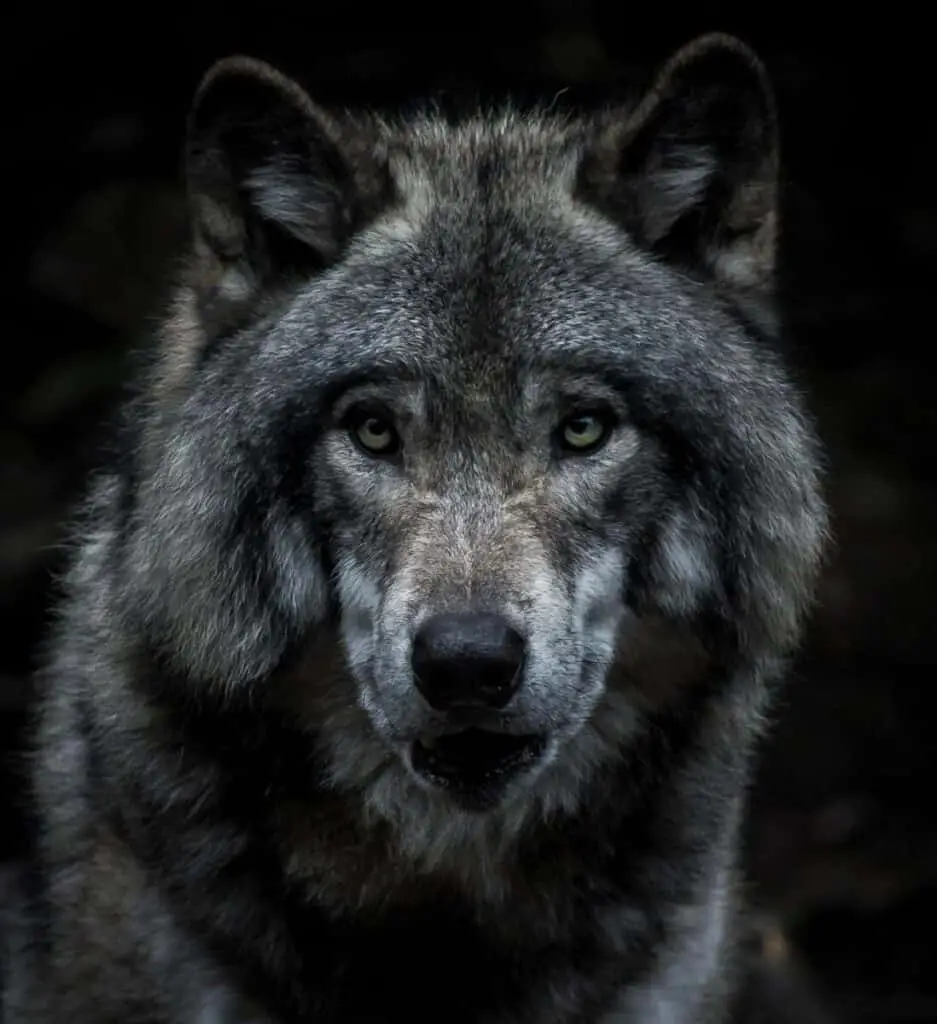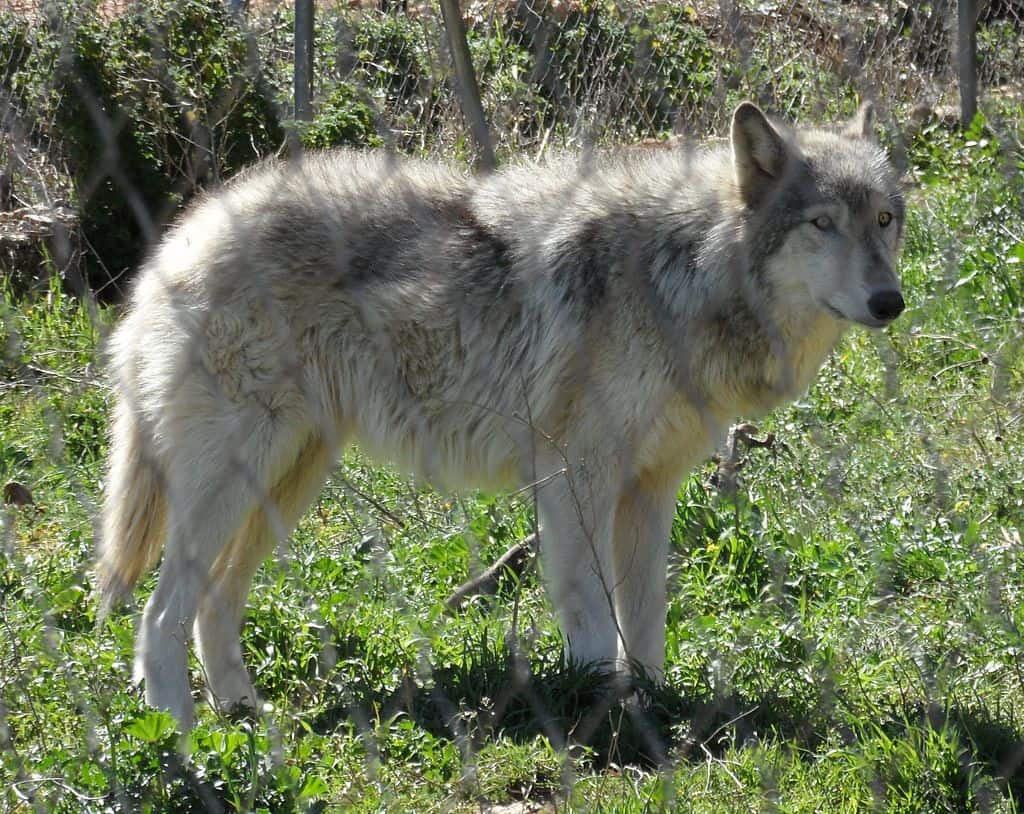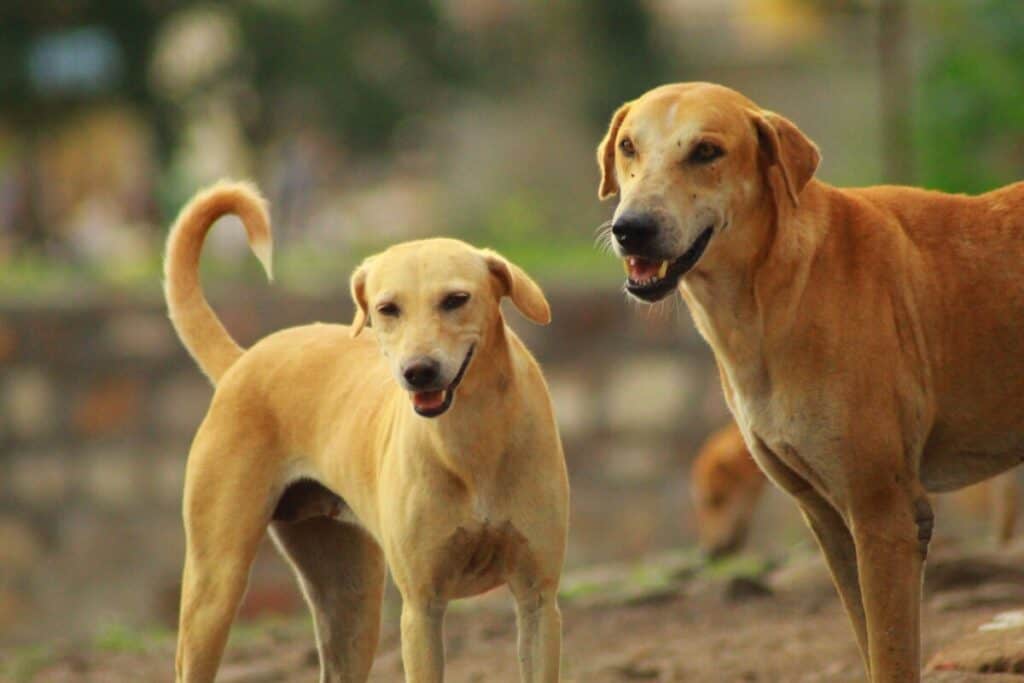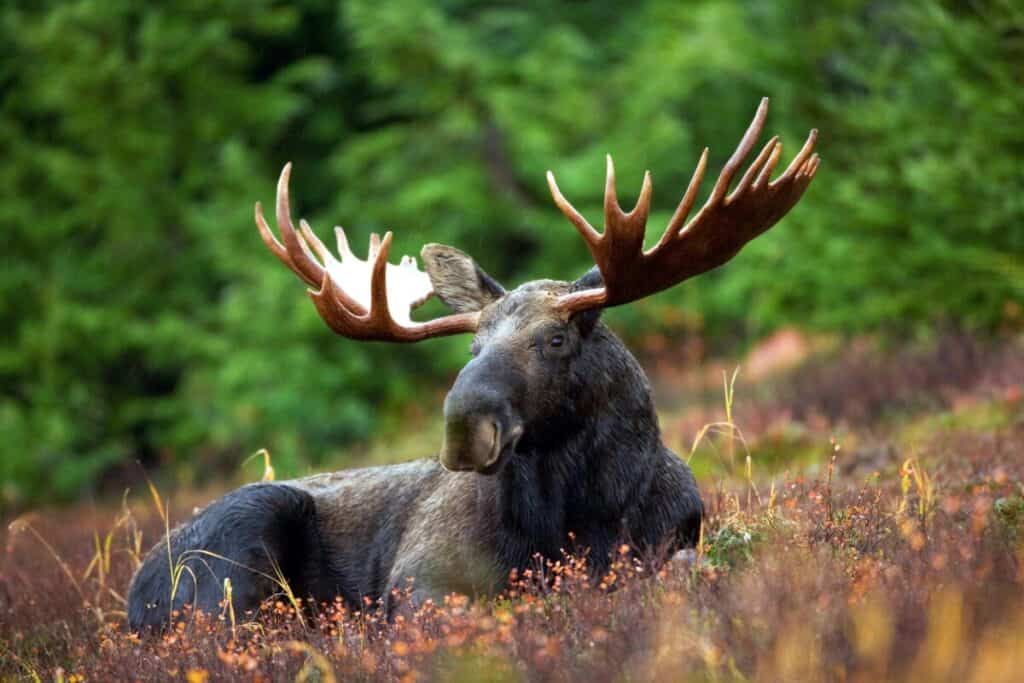I’ve always been fascinated with wolves and their ability to hunt cooperatively to bring down large animals like moose and bison. As a biologist I’ve become interested in the controversial topic of wolf dog hybrids. I’ve written this article to explore the dangers wolf dogs pose to people and to wild wolf populations.
Wolves and wolf dog hybrids are too dangerous to be treated as ordinary pets. Wolves are unpredictable and can never be completely trusted around people. The US Centers for Disease Control found that wolf dogs were responsible for 7 percent of deaths related to dog bites between 1979 and 1996, despite being a tiny percentage of the overall dog population.
There are thought to be over 100,000 wolf dog hybrids in the USA, even though 40 states or so ban ownership or breeding of these animals.
There seems to be growing public interest in keeping wolves and wolf dog hybrids as pets. Wolves have always captured people’s imaginations as the stuff of legend and fantasy. Popular books, TV shows, and films – recently the Game of Thrones, for example – have entertained us with fantastical creatures such as werewolves and dire wolves.

Let’s consider the pros and cons of owning a dog, a wolf, or a wolf dog hybrid.
Comparisons between Dog, Wolf, and Wolf Dog Hybrid
| DOG Canis lupis familiaris | WOLF Canis lupis | WOLF-DOG HYBRID | |
| General Characteristics | Domesticated for many thousands of years, highly socialized to humans, less intelligent and persistent than wolves, less destructive behaviour, need moderate exercise | Not socialized for human interaction, highly dependent on other wolves, chew everything, would destroy a house to escape, highly active, born to run | Unpredictable towards humans and other pets, often has needs of a wolf. Requires more exercise than a dog. Cannot be treated as a pet dog and, in many cases, cannot be trained. |
| Bite power | German shepherd 750 pounds per sq inch | 1500 psi, tears prey apart, can crush bones, and still gently move pups | Varies – likely more powerful than ordinary dog |
| 3- 5-week pup | Follows people for attention, watches people’s faces for emotional clues, familiar with human body language | Attached to pack mates, aggressive, fear humans in the wild, show little attachment to humans in captivity | UNPREDICTABLE. Some will be more dog-like, others wolf-like. Difficult to train and almost impossible to keep inside house |
| 6 Months old | Can be trained not to bite or chew | Strong prey drive develops, shows interest towards all small or weak animals, including children & ill people | Instinctive drive often develops, with interest in potential prey. Chews everything. Can never be fully trusted, especially near children |
| 2 Years old | Should respond well to obedience training. Form strong attachment to humans | Mature to be aggressive, drive to be dominant, especially males at sexual maturity | Aggressive behaviors, seek dominance at sexual maturity. Cannot be trained like dogs. |
| Desirability as a Pet | YES. Make excellent companions | NO – Need the companionship of other wolves and room to roam in order to thrive | NO – high numbers abandoned, rescued, and euthanized. Present high liability issues |
| Legal ownership | YES | NO– illegal in many jurisdictions | Not classified as a dog breed in most places. Not recognized by FCI or AKC. In the USA, approx. 40 states ban ownership or breeding |
Do Wolves or Wolf-Dogs Make Good Pets?
The answer is clearly NO. Wolves and wolf dog hybrids can be too dangerous to be treated as ordinary pets.
Wolves in captivity are unpredictable and can never be completely trusted around people. Wolves are wild animals and have never been domesticated as a species. They are instinctively driven to hunt prey, especially any weak animals that they encounter. Once a male wolf becomes sexually mature, he will seek to exert his dominance, particularly over other males, including humans.
Watch this Vet Explain Why a Wolf is Not a Good Pet
Wolf dogs have some portion of the genetic makeup of wolves, which will always raise the potential for unpredictability and danger. Wolf-like behavior can be triggered at any time; given their instinctive drive to hunt prey.
You should never turn your back on either a wolf or wolf-dog. It would be unsafe to have children in the presence of such an unpredictable and potentially dangerous animal.
Are Wolves More Intelligent than Dogs?
Recent scientific research is showing that wolves are more intelligent than the typical domesticated dog. Wolves demonstrate a better understanding of the principles of cause and effect than dogs do. When dogs are faced with a difficult problem such as completing two steps to access food, they are inclined to wait for human assistance. Wolves are much more self-directed when it comes to solving problems and also much more persistent.

Domestication has likely blunted the cause-and-effect understanding of contemporary dogs as compared to wolves. It may be that, while dogs are conditioned to live in a dependent role, in which they wait to receive their food from humans, wolves are socially and evolutionarily built to explore their environments more, and to persist longer, especially when it comes to obtaining food.
Surprisingly, wolves can even follow human directions as well as dogs, under test conditions.
Physical Differences Between a Dog, Wolf, and Wolf-dog
Although there’s no scientific consensus, genetic research appears to show that dogs split apart, evolutionarily speaking, from a common wolf-ancestor at least 27,000 years ago.

One of the first clues regarding wolf vs dog is the size of the head and jaw in comparison to the size of the body. Wolves have heads that are proportionally larger than those of dogs. They have the same number of teeth, but the jaws of a wolf are larger and much more powerful. Wolves have a bite force about twice that of a large domestic dog (1500 psi vs 750 psi).
Eye color can provide an important clue.
Wolves have eyes that are primarily amber or golden. An animal with blue eyes is carrying dog genes. Even dark brown or black eyes are considered dog traits.
Wolf dogs can have amber, black or even golden eyes, but blue colored eyes are exceedingly rare. The gene for blue eyes is a recessive trait that needs to be present in both parents. Since this is a dog trait, finding an animal with wolf content and blue eyes would be highly unlikely.

Feet provide additional clues.
Wolves also have larger feet in comparison to dogs. Over thousands of years of domestication dogs have lost the need to chase down and kill prey for food. Even feral dogs are scavengers rather than hunters. Wolves, of course, are active hunters, and in most cases, admirably adapted to running or loping over rough terrain, across ice and snow, and swimming across rivers and lakes.
The feet provide additional clues to the identity of an animal. One clue is the presence of dewclaws on the hind feet. Dewclaws are the vestigial first toes, which are common on the hind legs of domestic dogs but considered absent from pure wolves, which only have four hind toes. If a wolf has dewclaws on its hind legs, it can be a good indicator of dog genes and high likelihood of a wolf dog.
Another distinguishing feature is the front foot. Wolves have webbed toes on the front feet to help with swimming and navigating through the snow. Many breeds such as Labrador retrievers have some webbing, but most dogs lack webbing to the same extent as wolves.
Social Organization in Wolves and Dogs
We’re beginning to see that there are some big differences between wolves and dogs. Now let’s turn our attention to some of the distinctions in social organization between wolves and dogs.

First, it is important to dispel a common misperception, particularly in North America and Europe, that most dogs live with human owners. In fact, 70 and 80% of the world’s dog population is made up of free-ranging dogs without owners (Lord, et al., 2013). Furthermore, free-ranging dogs often form a distinct population deriving from ancestors native to the region rather than a mixture of modern breeds.
When we think of social organization, there’s a big difference between ‘pet dogs’ and free-ranging dogs. You might think that free-ranging dogs would have the same social organization as wolves. But this is where domestication has changed dogs in ways that many of us do not realize.
Free-ranging dogs are a feature of many places you might visit in your travels through Asia or Africa, in which case you will likely appreciate what Marshall-Pescini, et al., 2017 have to say: “These free-ranging populations are not, as is often thought, made up of ex-pet dogs (which represent the minority), but rather they are self-sustaining populations of ‘free-breeding’ animals that independently choose their mates and whose existence is affected by dispersal patterns, food abundance, mate choice as well as human activities.”
One startling statistic is that dogs kill over 50,000 people yearly. Most of these deaths are not the result of mauling by household pets, but rather due to feral and stray dogs infected with rabies. The World Health Organization (WHO) estimates that there are 60,000 human deaths from rabies each year in Asia and Africa. According to WHO: dogs transmit the rabies virus in more than 99% of human cases and 40% of cases occur in children under 15 years of age.
Keep this in mind when travelling to places were feral dogs and rabies are common, such as India for example.
Social Organization of Wolves

Wolf packs are usually composed of a breeding pair that have formed a long-term bond, along with their adult and sub-adult offspring, and pups. All members of the pack participate in rearing the pups by regurgitating food and providing defense from predators. Pups are almost totally reliant on other pack members until 7–8 months of age, when they begin to participate in hunts.

Wolves are highly reliant on a cohesive and functional pack structure to successfully raise pups, hunt and kill prey, and to defend their territory.
Social Organization of Free-ranging Dogs
Free-ranging dogs form groups of 2–8 individuals and stable packs can form with up to 30 dogs. Packs are usually a loose mixture of males and females with their pups. Females can choose to breed with just one male, but most will breed promiscuously.

Pups are raised mostly by their mothers with occasional help from others in the group. Paternal and ‘grandmotherly’ care can also take place. By the age of 10–11 weeks, mothers no longer provide for the pups. After sexual maturity, young adults may remain with their native pack or mix with other packs.
Here’s a quick summary table comparing the social organization of wolves vs dogs, adapted from Marshall-Pescini, et al., 2017.
| Wolves | Dogs | |
| Group composition | Breeding pair + offspring | Domestic – often ‘part’ of a human family. Free-ranging packs: several breeding females, males, and offspring. |
| Mating system | Pair bonding | Mostly promiscuous |
| Seasonal | Non-seasonal | |
| Parental care | By all pack members | Mostly maternal (some cases of paternal) |
| Pup dependence on adults | High-prolonged | Low-short lived |
Are Dogs or Wolves Better at Cooperating?
One key aspect of life as a wolf or dog is the level of cooperation between individuals. You would think that domesticated dogs would demonstrate more tolerance and cooperation with fellow dogs than wolves do. However, when we look at the latest research on the social ecology of wild wolves compared to free-ranging dogs we find another story.

In most cases, wolves depend on the pack for cooperative hunting and breeding, with all members involved in feeding the young. By contrast, dogs, even those that are free ranging, care only for their own young and rely mainly on solitary scavenging for food.
It is thought that this change in the socio-ecology of dogs may have resulted in a loss of cooperative abilities between individuals.
At the Wolf Science Center researchers have found that wolves are more successful at cooperating with other wolves, compared to dogs interacting with other dogs. Closely bonded partners are the ones that cooperate best in both dogs and wolves.
Dogs cooperate much less than wolves when feeding. Perhaps this comes with the more solitary nature of scavenging vs hunting and feeding together in a pack. Wolves will tend to share a kill, even with subordinates, whereas dogs will share much less. In the case of dogs, the dominant animals get to feed first, while subordinates stay back to avoid conflict.

Recent studies at the Wolf Science Center suggest that cooperativeness and associated behaviours play a major role in the lives of wolves. With dogs it seems that domestication has resulted in the loss of some of the abilities to cooperate and function as a coordinated unit.
While dogs are conditioned to live in a dependent role, waiting to receive food directly or indirectly from humans, wolves are socially and evolutionarily built to take a more active role in finding and successfully hunting prey.
Feeding ecology of wolves and dogs
There’s a big difference between the food-gathering practices and behaviors of wolves vs free-ranging dogs.
Most wolves form packs to hunt large game animals, often with relatively low rates of success. Wolves chase and test their prey, looking for animals they can kill as quickly and efficiently as possible while decreasing their chances of injury. Large ungulates like deer, moose, elk and caribou are a wolf’s primary food source.

Wolves will also eat smaller animals such as beaver, hare, and ground squirrel.
There are lots of risks involved in hunting, considering that large animals such as moose and elk have antlers that can seriously injure their attackers. Hunting requires extraordinary persistence since success rates, even as a pack, are only between 10% and 49%. In general, it appears that the larger the pack the more successful the hunt.
As apex predators, wolves help keep ecosystems in balance by hunting and testing animals that are weak or sickly. This leaves the stronger and healthier animals to reproduce and successfully raise viable young.
Free-ranging dogs typically live close to human settlements and their diet is largely associated with human refuse and waste. Some free-ranging dogs might hunt in packs, but this plays a minor role in most populations.
Scavenging on human refuse appears to be mostly a solitary or small group activity, since the food is often scattered and does not require a group effort to find it. In fact, if several dogs scavenge together and find the same limited resource, it would likely increase the potential for conflict.
Here’s a quick summary table comparing the feeding ecology of wolves and dogs, adapted from Marshall-Pescini, et al., 2017.
| Wolves-hunters | Dogs-scavengers | |
| Content | Specialist: meat of prey animals, usually large game | Generalist: grain/starch, human waste |
| Distribution | One large kill that can be monopolized | Small, distributed items |
| Predictability | Low: seasonal fluctuation/changing location | High: seasonally constant/fixed location |
| Danger/Risk | High: prey can be dangerous | None |
| Reliance on others | High for large prey | None |
| Human resource dependence | None | High |
Can Wolves Survive on Small Game Alone?
As a young biologist, my interest in wolves was piqued when I came across a book titled Never Cry Wolf by Farley Mowat. The book is an absorbing account of Mowat’s experiences in the Canadian Arctic with Arctic wolves, but it turns out that many of his observations about wolves have been called into question. Take, for example, his notion that wolves can survive on voles and other small prey. L. David Mech, a wolf expert, has observed that, “…Mowat is not a scientist, and his book, although presented as truth, is fiction.”

We know that wolves living in the Arctic and in the Boreal forest are primarily predators of large animals such as deer, caribou, moose, and bison, with occasional rodents, ground squirrels, ptarmigans, etc. But diet may not be quite as black and white on the West Coast of Alaska and Canada, where coastal wolves are found.
Coastal wolves form an isolated population uniquely adapted to the temperate rain forests of North America’s north-west coast. These forests once stretched from California to southern Alaska, but more than half of these forests have been severely altered by logging and other human activities. Wolves of coastal rain forests are now restricted to British Columbia and south-east Alaska, and are no longer found in California, Oregon, or Washington.
Unlike arctic wolves, the coastal wolf’s main food source is seafood, making up 90% of its diet. Salmon accounts for nearly a quarter of their diet. They also forage on barnacles, clams, herring eggs, seals, river otters, and whale carcasses. (Munoz-Fuentes et al., 2009)
Interestingly, coastal wolves have had to adapt to this diet, given the potential health impacts of consuming salmon. Salmon commonly carry a disease that can cause acute symptoms called salmon poisoning disease (Neorickettsia helminthoeca). Some salmon tissues are also known to harbor parasites that can be fatal to canids, including wolves. Coastal wolves have been observed to consume salmon heads while avoiding the body, presumably to avoid Neorickettsia concentrated in the viscera.
If coastal wolves are to survive in BC and Alaska, we need to do a better job of protecting the Pacific temperate rain forests and to recognize the value of these unique animals through appropriate management and government policies.

For the fascinating and heartbreaking story of one such coastal wolf, I can recommend the book by Cheryl Alexander, Takaya: Lone Wolf.
How Could Dogs Present a Threat to Wild Wolves?
You would think that it works the other way round. We know that wolves will occasionally attack and kill dogs. So how can dogs present a threat to wolves?
One threat from domestic dogs comes from the diseases they carry and their ability to spread canid disease to wolves. As human populations grow, we keep pushing our boundaries and taking our dogs with us. There’s bound to be more wolf/dog interactions and more opportunities for dogs to transmit novel diseases to wolf populations. (We’ve all seen the impacts that a pandemic can inflict on a vulnerable population – think Covid 19!)
The second threat to wolf populations is the potential for wolf-dog hybrids to backcross breed with wolves to the extent that wolf populations become lost to swarms of hybrids. Scientists agree that little is known about the ecology, behavior, and social acceptance of wolf-dog hybrids.
In this article, we’ve seen that there are striking organizational and behavioral differences between wolves and dogs. No doubt, many wolf-like characteristics carry through to wolf-dogs, but the prospect of swarms of wolf-dogs adds some real concern regarding the future of wild wolf populations. This holds true for wolf populations throughout the world, with particular concern in North America and Europe.

When 40 scientists anonymously shared their views on free-roaming dogs and wolf-dogs in a recent paper (Donfrancesco, et al., 2019), there was strong agreement that:
- People should be educated about the impact of free-roaming dogs, and
- Governments should remove wolf-dog hybrids from small and recovering wild wolf populations.
Swarms of wolf-dog hybrids could render the conservation of wild wolf populations unfeasible, according to Valerio Donfrancesco, University of Exeter.
Conclusion
I hope you agree that the issue of wolf-dog hybrids presents many challenges and complexities beyond those that we commonly consider, especially in the process of choosing a pet.
Wolves are magnificent creatures in the wild and dogs are faithful human companions without compare. But they are also vastly different animals – probably with more differences than most people realize!
And who would have thought that the very existence of wolf-dog hybrids, particularly those that form feral packs, could potentially pose an existential threat to wild wolf populations.

Farley Mowat accomplished one thing for certain! He raised the profile of wolves in the wild, and his book was instrumental in changing popular attitudes towards the wolf from blood thirsty killer to essential apex predator.
The Gear We Love to Travel With
We love to travel in search of exceptional wildlife viewing opportunities and for life-enhancing cultural experiences.
Here is the gear we love to travel with for recording our adventures in safety and comfort:
- Action Camera: GoPro Hero10 Black – we find these waterproof cameras are invaluable for capturing the essence of our adventures in video format. Still photos are great, but video sequences with all the sights and sounds add an extra dimension. I use short video clips to spice up many of my audiovisual presentations.
- Long Zoom Camera: Panasonic LUMIX FZ300 Long Zoom Digital Camera – I love this camera for its versatility. It goes from wide angle to 28X optical in a relatively compact design. On safari in Africa I’ve managed to get good shots of lions that the folks with long lenses kept missing – because the lions were too close! I also like the 120 fps slow-motion for action shots of birds flying and animals on the move. I call this my “bird camera.”
- 360 Camera: Insta360 ONE R 360 – 5.7K 360 Degree Camera, Stabilization, Waterproof – see my article How to Take Impossible Shots with Your 360 Camera. This camera is literally like taking your own camera crew with you when you travel! Read my article and you’ll see why.
- Backpack camera mount: Peak Design Capture Clip
- Drone: DJI Mini 2 (Fly More Combo) – this mini drone is made for travel!
- Water Filtration: LifeStraw Go Water Filter Bottle
- Binoculars: Vortex Binoculars or Vortex Optics Diamondback HD Binoculars (good price)
AFRICAN LIONS as Apex Predators
If you are interested in apex predators, check out my article on African lions to compare and contrast the social organization of lion prides and wolf packs. If you thought the life of a lion king would be a piece of cake, you might be surprised to learn that the king must constantly defend his pride and his territory from deadly rivals and enemy coalitions! Added bonus: listen to the impressive sound of a lion roaring!
References
Donfrancesco, Valerio; Paolo Ciucci, Valeria Salvatori, David Benson, Liselotte Wesley Andersen, Elena Bassi, Juan Carlos Blanco, Luigi Boitani, Romolo Caniglia, Antonio Canu, Claudia Capitani, Guillaume Chapron, Sylwia D. Czarnomska, Elena Fabbri, Marco Galaverni, Ana Galov, Olivier Gimenez, Raquel Godinho, Claudia Greco, Maris Hindrikson, Djuro Huber, Pavel Hulva, Włodzimierz Jedrzejewski, Josip Kusak, John D. C. Linnell, Luis Llaneza, José Vicente López-Bao, Peep Männil, Francesca Marucco, Luca Mattioli, Pietro Milanesi, Cyril Milleret, Robert W. Mysłajek, Andres Ordiz, Vicente Palacios, Hans Christian Pedersen, Cino Pertoldi, Malgorzata Pilot, Ettore Randi, Alejandro Rodríguez, Urmas Saarma, Håkan Sand, Massimo Scandura, Astrid Vik Stronen, Elena Tsingarska, Nibedita Mukherjee. Unravelling the Scientific Debate on How to Address Wolf-Dog Hybridization in Europe. Frontiers in Ecology and Evolution, 2019; 7 DOI: 10.3389/fevo.2019.00175
Lord, K.; M. Feinstein, B. Smith, R. Coppinger. 2013. Variation in reproductive traits of members of the genus Canis with special attention to the domestic dog (Canis familiaris). Behav. Processes, 92 (2013), pp. 131-142
Lowrey, Annie. 2020. The animals are a human creation. They belong neither in homes nor in the wild. The Atlantic, February 2, 2020 https://www.theatlantic.com/ideas/archive/2020/02/what-do-wolfdogs-want/605896/
Marshall-Pescini, Sarah; Simona Cafazzo, Zsófia Virányi, Friederike Range. 2017. Integrating social ecology in explanations of wolf–dog behavioral differences. Current Opinion in Behavioral Sciences, Volume 16, 2017, Pages 80-86, ISSN 2352-1546, https://doi.org/10.1016/j.cobeha.2017.05.002.
Munoz-Fuentes, Violeta; Chris T. Darimont, Robert K. Wayne, Paul C. Paquet, and Jennifer A. Leonard. 2009. Ecological factors drive differentiation in wolves from British Columbia. Journal of Biogeography 36, 1516–1531
University of Exeter. 2019. “Wolf-dog ‘swarms’ threaten Europe’s wolves.” ScienceDaily, 23 May 2019. <www.sciencedaily.com/releases/2019/05/190523104940.htm>.
Check Out Our TOP Articles for Even More Fascinating Creatures
- How do Octopus Reproduce? (Cannibalistic Sex, Detachable Penis)
- Do Jellyfish have Brains? How Can they Hunt without Brains?
- Why are Deep Sea Fish So Weird and Ugly? Warning: Scary Pictures!
- Are Komodo Dragons Dangerous? Where Can you See Them?
- Koala Brains – Why Being Dumb Can Be Smart (Natural Selection)
- Why do Lions Have Manes? (Do Dark Manes Mean More Sex?)
- How Do Lions Communicate? (Why Do Lions Roar?)
- How Dangerous are Stonefish? Can You Die if You Step on One?
- What Do Animals Do When They Hibernate? How do they Survive?
- Leaf Cutter Ants – Surprising Facts and Adaptations; Pictures and Videos
- Irukandji Jellyfish Facts and Adaptations; Can They Kill You? Are they spreading?
- How to See MORE Wildlife in the Amazon: 10 Practical Tips
- Is it Safe to go on Safari with Africa’s Top Predators and Most Dangerous Animals?
- What to Do if You Encounter a Bullet Ant? World’s Most Painful Stinging Insect!
- How Do Anglerfish Mate? Endless Sex or Die Trying!
- How Smart are Crocodiles? Can They Cooperate, Communicate…Use Tools?
- How Can We Save Our Oceans? With Marine Sanctuaries!
- Why Are Male Birds More Colorful? Ins and Outs of Sexual Selection Made Easy!
- Why is the Cassowary the Most Dangerous Bird in the World? 10 Facts
- How Do African Elephants Create Their Own Habitat?
- What is Killing Our Resident Orcas? Endangered Killer Whales
- Why are Animals of the Galapagos Islands Unique?
- Where Can You See Wild Lemurs in Madagascar? One of the Best Places
- Where Can You see Lyrebirds in the Wild? the Blue Mountains, Australia
- Keeping Mason Bees as Pets
- Why do Flamingos have Bent Beaks and Feed Upside Down?
- Why are Hippos Dangerous? (Do They Attack People?)

